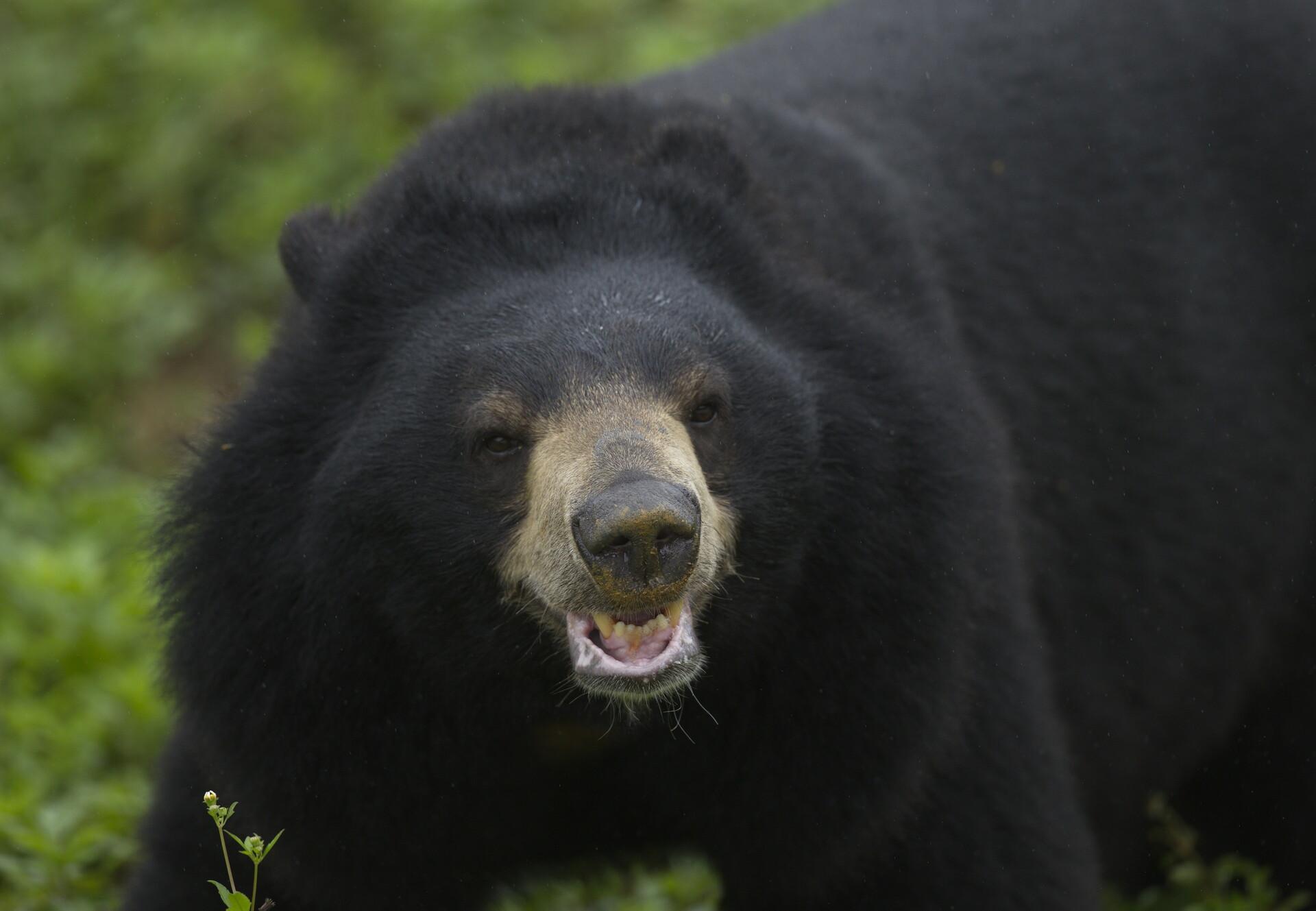
Asiatic black bears
Interesting facts and the reason why this bear is exploited for bile
Asiatic black bears (Ursus thibetanus), also known as a moon bears, live in the broad-leaf and mixed forests of the mountain regions in many Asian countries (e.g. Afghanistan, Bangladesh, Cambodia, China, India, Japan, North and South Korea, Myanmar, Thailand and Vietnam).
Asiatic black bears are predominantly vegetarian, mainly eating grasses, leaves, fruits, berries, nuts, seeds, roots and tubers. To a lesser extent, their diet includes invertebrates, small vertebrates like lizards or rodents, carrion, bee’s nests and honey. They are highly opportunistic meaning they will eat a wide range of different foods depending on what is available to them. Their diet is also highly seasonal as their foods vary greatly in type and abundance during the year.
The autumn is a critical part of their annual cycle where they will go through a period of hyperphagia, meaning they eat excessively to gain fat reserves to see them through the winter months. Asiatic black bears will den for their winter sleep in the northern latitudes of their range.
body measurements

Weight of adult males ranges from 100-200 kg, adult females from 50-125 kg
Head-tail length of adult bears 1.3 - 1.9 m
Unique features: long neck hair and ears which appear large in proportion to the rest of its head
Why are they exploited for bile?
Bile, taken from the gallbladders of bears, has been used in traditional medicine in East Asia for more than 1000 years. Bear bile contains high concentrations of ursodeoxycholic acid (UDCA) which is used to treat liver and gallbladder ailments. It is also now used in a range of other products such as toothpaste and face creams, and even hangover remedies. However, UDCA can be produced synthetically in laboratories and there are many effective herbal alternatives that do not contribute to the suffering of bears.
The bear species most commonly farmed for bile extraction is the Asiatic black bear. The sun bear or Malayan sun bear (Helarctos malayanus) is also found in private keeping throughout Vietnam and used for bile extraction although in very small numbers when compared to moon bears. Brown bears (Ursus arctos) have also been used for bile extraction in Asia but on a very small scale when compared to moon and sun bears.
The bile of the Asiatic black bear and the brown bear has the highest concentration and volume of ursodeoxycholic acid because of the overall size of the bear and size of their gall bladder.




